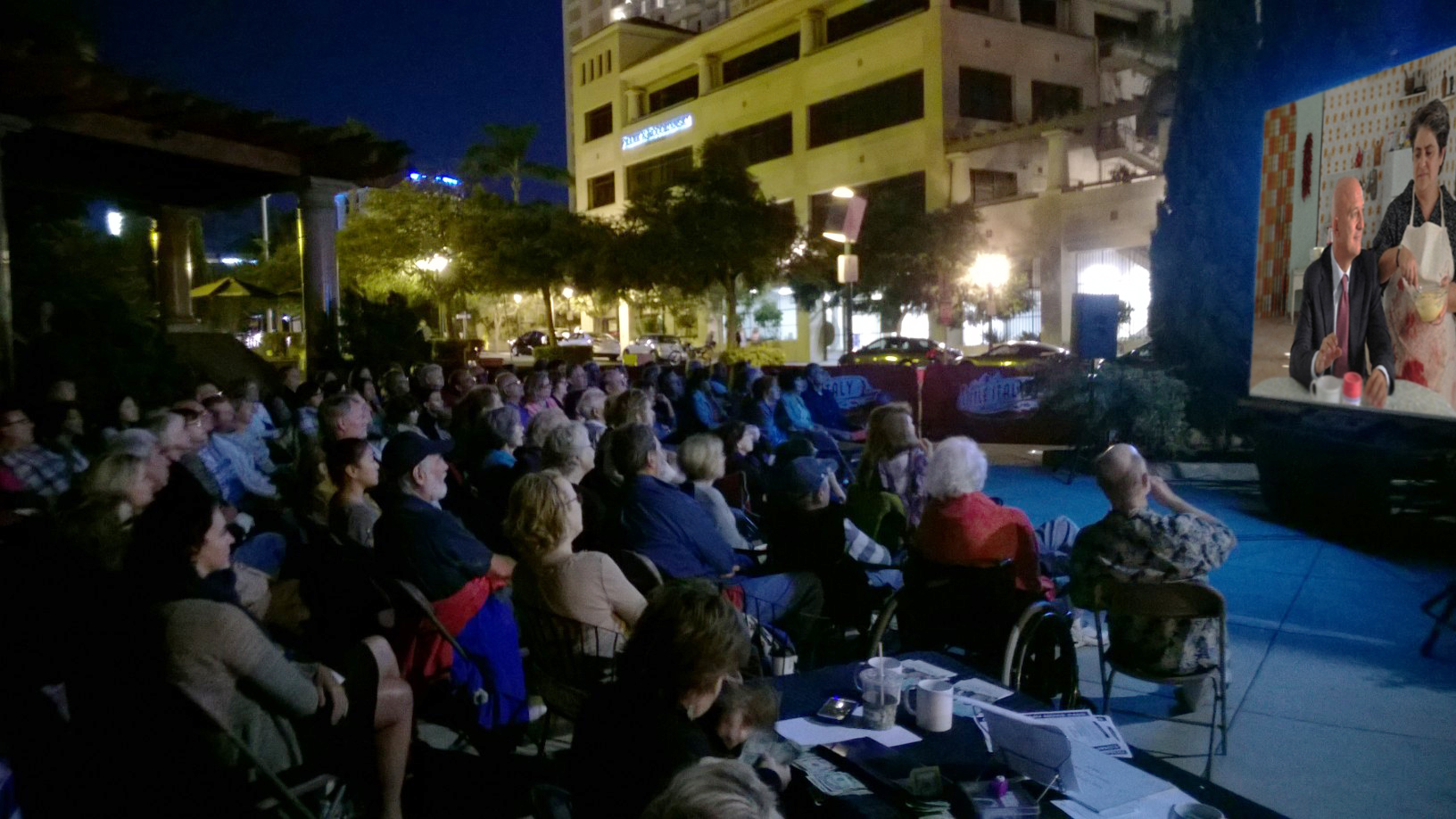The Little Italy Film Festival wouldn’t have happened if not for John Pente’s approval to allow a movie projector to be set up in his third-floor bedroom.
In 1999, Ciao Bella Restaurant owners Tony Gambino, father, and son, wanted to expand the restaurant. They bought the property next door and that property has a big white blank wall facing a parking lot. Now, the Little Italy neighborhood has lots of murals commissioned by the Restaurants Association. The Gambino’s then asked a few artists and the artist they’ve chosen suggested that instead of painting the brick, it would be better to put it on – like a billboard.
However, one member of the Little Italy Resident’s Association was not fine with the idea of a billboard. In her mind, a mural fits the character of Little Italy, but a billboard, once the owner decides to lease it out to anyone, might tarnish it. It went to court, the judge agreed that a billboard is not a mural, and the white space remained blank for several months.
A rift between restaurant owners and residents of Little Italy started brewing.
When Marian Criccio, President of the Restaurant Owners’ Association, visited her in-laws in Italy, she noticed that the movies were shown on the wall of the piazza in Palermo, Sicily. The piazza was filled with people watching the film and it gave her the idea that it could be replicated in her neighborhood.
She then called Tom Kiefaber of Senator’s Theatre and ran the idea by him. At first, Kiefaber was unenthusiastic not until he saw a photograph of how it could look like. Kiefaber then visited the parking lot and was excited to see that the blank space was the exact ratio of a 16mm movie screen. The parking lot and the street behind it can sit people, too. Since they need a space to project from, the third-floor window of the house facing the blank wall was there obvious candidate. Luckily, the owner of the house, Mr. John Pente was the most cooperative man in Little Italy.
When Marian Criccio asked the Residence Association if they agree on projecting Italian films onto the empty wall, everybody gave their consent as it is something that the whole community will benefit from. John Pente, knowing that this will unite the community he grew up with, wholeheartedly supported the idea and allowed a movie projector to be set up in his top-floor bedroom that was previously occupied by his sons.
John Pente lived all his life in Little Italy. These twelve square blocks of neighborhood, which is bounded on the north by Pratt street, on the east by Eden street, on the south by Eastern avenue, and the west by President street, was predominantly occupied by Italian migrants well before the twentieth century.
Before the Italians moved into what is now as the Little Italy, it was earlier a community of Germans, Irish, and Jewish migrants. The neighborhood got its name when a large number of Italian immigrants moved into the area and established themselves. In 1880, they laid the cornerstone for St. Leo’s church and a school later opened around 1910. Though it has since closed, St. Leo’s is still considered the heart of the Little Italy community. Traditionally, the church has been the centerpiece of the largely Catholic neighborhood and is still frequented by residents along with Italian-Americans from elsewhere in Baltimore with family roots to the neighborhood. They also celebrate the feast day of St. Anthony who they believed saved the neighborhood from the Great Baltimore fire of 1904.
From 1999 until 2017, the Film Festival was organized by the Little Italy Restaurant Association and since became a popular summertime tradition in Baltimore. Premiered on July 2, 1999, the first movie shown was “Rocky”, the 1976 American sports drama film starring Sylvester Stallone. That night, Mr. Kiefaber offered free popcorn and another restaurant gave free cannoli. Soon after, colas and vinos are offered for free together with the free movie. In every given Friday, the crowd can reach up to 1,200 on nicer evenings, mostly former residents who come back and enjoy the community they grew up with.
Midway through the first season, The New York Times featured the Little Italy Summer Film Festival on the front page of their newspaper. Soon after, ABC Australia produced an eight-minute documentary on how the little town in Baltimore has evolved from a poor Sicilian enclave to a thriving commercial district. NPR, CNN, and other media outlets came calling. Even Italian, German, and Czechoslovakian media have booked flights to Baltimore to view the weekly event. The Little Italy Summer Film Festival had attracted national and international attention and was copied by other cities around the nation.
